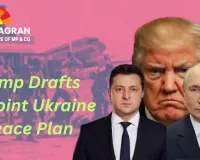Russia Offers India Su-57 Stealth Fighter Jet Technology, Proposes Joint Production
Digital Desk

Russia has offered to transfer its advanced 5th generation Su-57 stealth fighter jet technology to India, along with the option for joint production, officials confirmed at the 2025 Dubai Air Show. The move aims to strengthen Indo-Russian defence cooperation and provide India with a strategic counter to the US F-35 and Chinese JF-17 aircraft.
Russian authorities said New Delhi can access all components of the Su-57, including engines, radar, stealth systems, and modern weaponry, with no restrictions on technology transfer. Moscow also proposed building a two-seater Su-57 in India, underscoring the possibility of local production.
Sergei Chemezov, CEO of Russian state company Rostec, emphasised the longstanding defence partnership between India and Russia, noting that Moscow has consistently supplied military equipment even during periods of international sanctions. “We are supplying India with all kinds of military equipment according to its needs and strengthening future cooperation,” he said.
The announcement comes shortly after Indian External Affairs Minister S. Jaishankar met Russian President Vladimir Putin in Moscow during the SCO summit. Putin is expected to visit India next month for the 23rd India–Russia Annual Summit, where defence cooperation is likely to be a key agenda item.
India is also developing its indigenous fifth-generation fighter jet, the Advanced Medium Combat Aircraft (AMCA), which is expected to be completed in 2–3 years. The project, approved by the Cabinet Committee on Security in April 2024, carries an estimated cost of ₹15,000 crore and will feature advanced stealth technology.
In parallel, India is negotiating the purchase of missiles worth ₹10,000 crore from Russia for its existing S-400 air defence system, which proved critical during Operation Sindoor, reportedly neutralising multiple Pakistani aircraft and a spy plane.
The Su-57 offer reinforces India’s strategy to modernise its air force, diversify defence procurement, and enhance local production capabilities, ensuring readiness against evolving regional threats.











